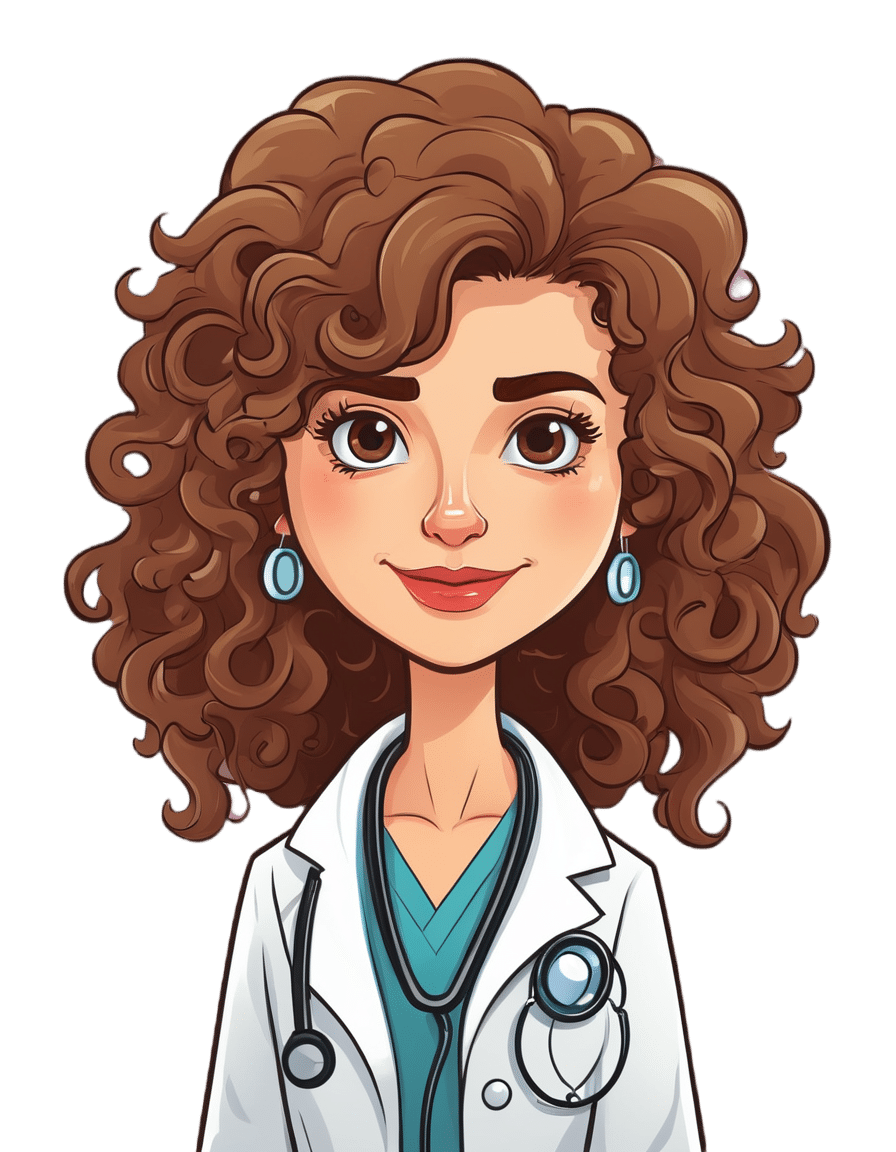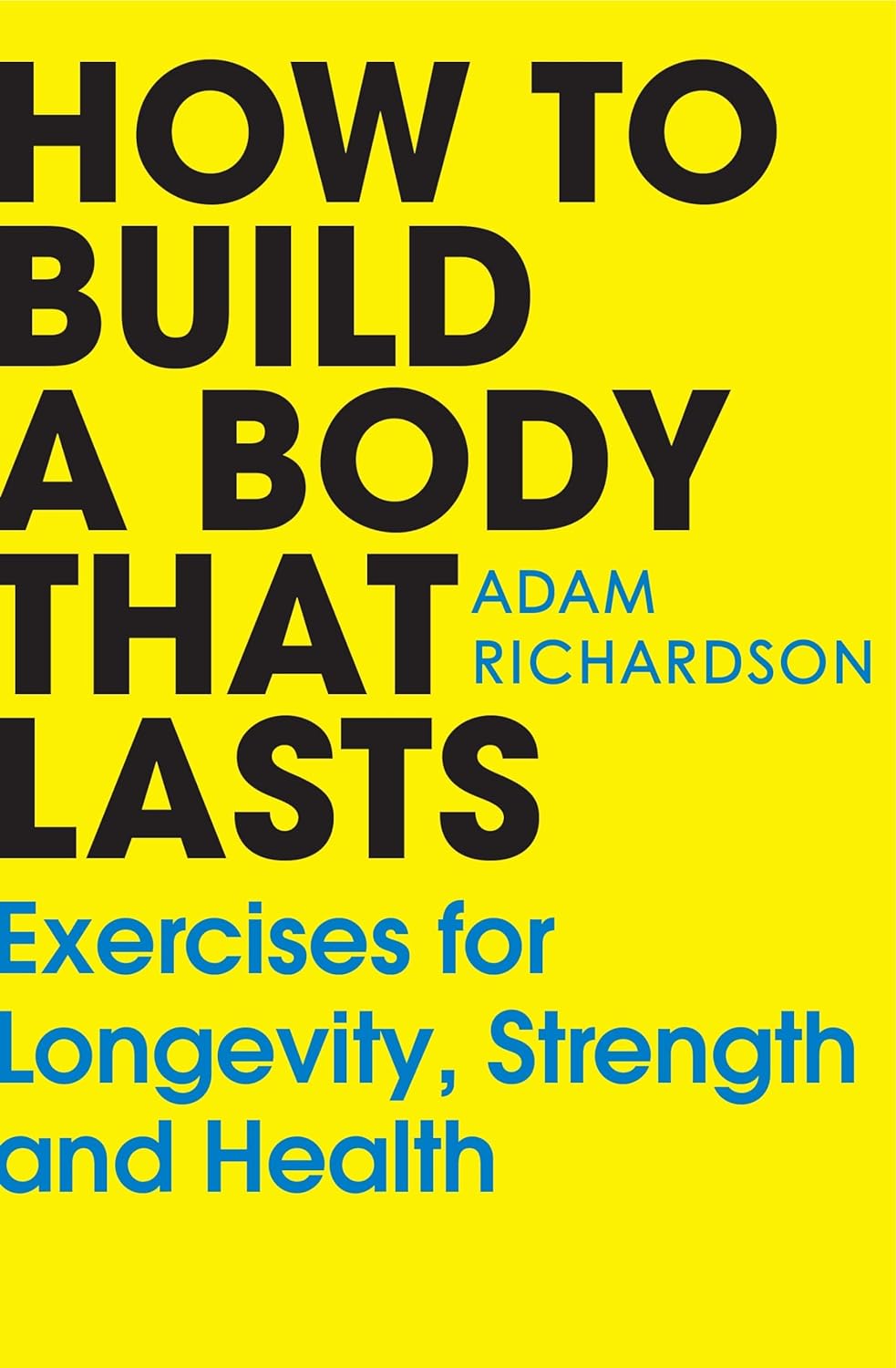
What is pathological demand avoidance – and how is it different to ‘acting out’?
10almonds is reader-supported. We may, at no cost to you, receive a portion of sales if you purchase a product through a link in this article.
“Charlie” is an eight-year-old child with autism. Her parents are worried because she often responds to requests with insults, aggression and refusal. Simple demands, such as being asked to get dressed, can trigger an intense need to control the situation, fights and meltdowns.
Charlie’s parents find themselves in a constant cycle of conflict, trying to manage her and their own reactions, often unsuccessfully. Their attempts to provide structure and consequences are met with more resistance.
What’s going on? What makes Charlie’s behaviour – that some are calling “pathological demand avoidance” – different to the defiance most children show their parents or carers from time-to-time?
What is pathological demand avoidance?
British developmental psychologist Elizabeth Newson coined the term “pathological demand avoidance” (commonly shortened to PDA) in the 1980s after studying groups of children in her practice.
A 2021 systematic review noted features of PDA include resistance to everyday requests and strong emotional and behavioural reactions.
Children with PDA might show obsessive behaviour, struggle with persistence, and seek to control situations. They may struggle with attention and impulsivity, alongside motor and coordination difficulties, language delay and a tendency to retreat into role play or fantasy worlds.
PDA is also known as “extreme demand avoidance” and is often described as a subtype of autism. Some people prefer the term persistent drive for autonomy or pervasive drive for autonomy.
What does the evidence say?
Every clinician working with children and families recognises the behavioural profile described by PDA. The challenging question is why these behaviours emerge.
PDA is not currently listed in the two diagnostic manuals used in psychiatry and psychology to diagnose mental health and developmental conditions, the current Diagnostic and Statistical Manual of Mental Disorders (DSM-5) and the World Health Organization’s International Classification of Diseases (ICD-11).
Researchers have reported concerns about the science behind PDA. There are no clear theories or explanations of why or how the profile of symptoms develop, and little inclusion of children or adults with lived experience of PDA symptoms in the studies. Environmental, family or other contextual factors that may contribute to behaviour have not been systematically studied.
A major limitation of existing PDA research and case studies is a lack of consideration of overlapping symptoms with other conditions, such as autism, attention deficit hyperactivity disorder (ADHD), oppositional defiant disorder, anxiety disorder, selective mutism and other developmental disorders. Diagnostic labels can have positive and negative consequences and so need to be thoroughly investigated before they are used in practice.
Classifying a “new” condition requires consistency across seven clinical and research aspects: epidemiological data, long-term patient follow-up, family inheritance, laboratory findings, exclusion from other conditions, response to treatment, and distinct predictors of outcome. At this stage, these domains have not been established for PDA. It is not clear whether PDA is different from other formal diagnoses or developmental differences.

Finding the why
Debates over classification don’t relieve distress for a child or those close to them. If a child is “intentionally” engaged in antisocial behaviour, the question is then “why?”
Beneath the behaviour is almost always developmental difference, genuine distress and difficulty coping. A broad and deep understanding of developmental processes is required.
Interestingly, while girls are “under-represented” in autism research, they are equally represented in studies characterising PDA. But if a child’s behaviour is only understood through a “pathologising” or diagnostic lens, there is a risk their agency may be reduced. Underlying experiences of distress, sensory overload, social confusion and feelings of isolation may be missed.
So, what can be done to help?
There are no empirical studies to date regarding PDA treatment strategies or their effectiveness. Clinical advice and case studies suggest strategies that may help include:
- reducing demands
- giving multiple options
- minimising expectations to avoid triggering avoidance
- engaging with interests to support regulation.
Early intervention in the preschool and primary years benefits children with complex developmental differences. Clinical care that involves a range of medical and allied health clinicians and considers the whole person is needed to ensure children and families get the support they need.
It is important to recognise these children often feel as frustrated and helpless as their caregivers. Both find themselves stuck in a repetitive cycle of distress, frustration and lack of progress. A personalised approach can take into account the child’s unique social, sensory and cognitive sensitivities.
In the preschool and early primary years, children have limited ability to manage their impulses or learn techniques for managing their emotions, relationships or environments. Careful watching for potential triggers and then working on timetables and routines, sleep, environments, tasks, and relationships can help.
As children move into later primary school and adolescence, they are more likely to want to influence others and be able to have more self control. As their autonomy and ability to collaborate increases, the problematic behaviours tend to reduce.
Strategies that build self-determination are crucial. They include opportunities for developing confidence, communication and more options to choose from when facing challenges. This therapeutic work with children and families takes time and needs to be revisited at different developmental stages. Support to engage in school and community activities is also needed. Each small step brings more capacity and more effective ways for a child to understand and manage themselves and their worlds.
What about Charlie?
The current scope to explain and manage PDA is limited. Future research must include the voices and views of children and adults with PDA symptoms.
Such emotional and behavioural difficulties are distressing and difficult for children and families. They need compassion and practical help.
For a child like Charlie, this could look like a series of sessions where she and her parents meet with clinicians to explore Charlie’s perspective, experiences and triggers. The family might come to understand that, in addition to autism, Charlie has complex developmental strengths and challenges, anxiety, and some difficulties with adjustment related to stress at home and school. This means Charlie experiences a fight, flight, freeze response that looks like aggression, avoidance or shutting down.
With carefully planned supports at home and school, Charlie’s options can broaden and her distress and avoidance can soften. Outside the clinic room, Charlie and her family can be supported to join an inclusive local community sporting or creative activity. Gradually she can spend more time engaged at home, school and in the community.
Nicole Rinehart, Professor, Child and Adolescent Psychology, Director, Krongold Clinic (Research), Monash University; David Moseley, Senior Research Fellow, Deputy Director (Clinical), Monash Krongold Clinic, Monash University, and Michael Gordon, Associate Professor, Psychiatry, Monash University
This article is republished from The Conversation under a Creative Commons license. Read the original article.
Don’t Forget…
Did you arrive here from our newsletter? Don’t forget to return to the email to continue learning!
Recommended
Learn to Age Gracefully
Join the 98k+ American women taking control of their health & aging with our 100% free (and fun!) daily emails:
-
The Menopause Risk That Nobody Talks About
10almonds is reader-supported. We may, at no cost to you, receive a portion of sales if you purchase a product through a link in this article.
In this week’s health news round up, we cover menopausal disordered eating, air pollution & Alzheimer’s, and cold sore comebacks:
When the body starts changing…
Eating disorders are often thought of as a “teenage girl thing”. But in fact, eating disorders in girls/women mostly occur along with “the three Ps”:
- Puberty
- Pregnancy
- Perimenopause & menopause
In very many cases, it’s likely “my body is changing and I have strong opinions on how it should be”. Those opinions are often reflective of societal norms and pressures, but still, they are earnestly felt also. In the case of pregnancy, the societal pressures and standards are generally lifted while pregnant, but come back immediately postpartum, with an expectation to rebound quickly into the same shape one was in beforehand. And in the case of menopause, this is often concurrent with a sense of loss of identity, and can be quite reactionary against what is generally considered to be the ravages of time.
Of course, looking after one’s health is great at any age, and certainly there is no reason not to pursue health goals and try to get one’s body the way one wants it. However, it is all-too-easy for people to fall into the trap of taking drastic steps that are not actually that healthy, in the hopes of quick results.
Further, 13% of women over 50 report current core eating disorder symptoms, and that is almost certain vastly underreported.
Read in full: Eating disorders don’t just affect teen girls—the risk may also go up around pregnancy and menopause
Related: Body Image Dissatisfaction/Appreciation Across The Ages From Age 16 To Age 88
Where there’s smoke…
It’s been known for a while that air pollution is strongly associated with Alzheimer’s disease incidence, but exactly how this happens has not been entirely clear, beyond that it involves S-nitrosylation, in which NO-related particles bind to sulfur (S) atoms, forming SNO (and scientists being how they are, the term for the resultant brain effect has been called a SNO-STORM).
However, researchers have now found that it has to do with how certain toxins in the air (notwithstanding our heading here, they don’t have to be smoke—it can be household chemicals or other things too) cause this resultant SNO to interfere with protein CRTC1, which is critical for forming/maintaining connections between brain cells.
This is important, because it means that if a drug can be made that selectively blocks S-nitrosylatoin actions affecting CRTC1, it can reverse a lot of Alzheimer’s brain damage (as was found in the laboratory, when testing the theory with CRTC1 proteins that had been genetically engineered to resist S-nitrosylation, which is not something we can do with living human brains yet, but it is “proof of principle” and means funding will likely be forthcoming to find drugs to do the same thing).
Read in full: Study reveals how air pollution contributes to Alzheimer’s disease
Related: 14 Powerful Strategies To Prevent Dementia
The virus that comes back from the cold
Cold sores are created by the Herpes simplex virus (yes, the same one as for the genital variety), and by adulthood, most of us are either infected (and periodically get cold sores), or else infected (as an asymptomatic carrier). A noteworthy minority, but a minority nevertheless, are immune. Unless you’ve never had physical contact with other humans, it’s highly unlikely you’re not in one of the above three categories.
For those who do get cold sores, they can seem random in their reoccurrence, but in reality the virus never went away; it was just dormant for a while.
This much was known already, but scientists have now identified the trigger protein (known as “UL 12.5” to its friends) that acts as an alarm clock for the virus—which may pave the way to a greatly-improved treatment, if a way can be found to safely interfere with that wake-up call:
Read in full: Cold sore discovery identifies unknown trigger for those annoying flare-ups
Related: Beyond Supplements: The Real Immune-Boosters!
Take care!
Share This Post
-
What You Should Have Been Told About The Menopause Beforehand
10almonds is reader-supported. We may, at no cost to you, receive a portion of sales if you purchase a product through a link in this article.
What You Should Have Been Told About Menopause Beforehand
This is Dr. Jen Gunter. She’s a gynecologist, specializing in chronic pain and vulvovaginal disorders. She’s also a woman on a mission to demystify things that popular culture, especially in the US, would rather not talk about.
When was the last time you remember the menopause being referenced in a movie or TV show? If you can think of one at all, was it just played for laughs?
And of course, the human body can be funny, so that’s not necessarily the problem, but it sure would be nice if that weren’t all that there is!
So, what does Dr. Gunter want us to know?
It’s a time of changes, not an end
The name “menopause” is misleading. It’s not a “pause”, and those menses aren’t coming back.
And yet, to call it a “menostop” would be differently misleading, because there’s a lot more going on than a simple cessation of menstruation.
Estrogen levels will drop a lot, testosterone levels may rise slightly, mood and sleep and appetite and sex drive will probably be affected (progesterone can improve all these things!) and
not to mention butwe’re going to mention: vaginal atrophy, which is very normal and very treatable with a topical estrogen cream. Untreated menopause can also bring a whole lot of increased health risks (for example, heart disease, osteoporosis, and, counterintuitively given the lower estrogen levels, breast cancer).However, with a little awareness and appropriate management, all these things can usually be navigated with minimal adverse health outcomes.
Dr Gunter, for this reason, refers to it interchangeably as “the menopausal transition”. She describes it as being less like a cliff edge we fall off, and more like a bridge we cross.
Bridges can be dangerous to cross! But they can also get us safely where we’re going.
Ok, so how do we manage those things?
Dr. Gunter is a big fan of evidence-based medicine, so we’ll not be seeing any yonic crystals or jade eggs. Or “goop”.
See also: Meet Goop’s Number One Enemy
For most people, she recommends Menopausal Hormone Therapy (MHT), which falls under the more general category of Hormone Replacement Therapy (HRT).
This is the most well-evidenced, science-based way to avoid most of the risks associated with menopause.
Nevertheless, there are scare-stories out there, ranging from painful recommencement of bleeding, to (once again) increased risk of breast cancer. However, most of these are either misunderstandings, or unrelated to menopause and MHT, and are rather signs of other problems that should not be ignored.
To get a good grounding in this, you might want to read her Hormone Therapy Guide, freely available as a standalone section on her website. This series of posts is dedicated to hormone therapy. It starts with some basics and builds on that knowledge with each post:
Dr. Gunter’s Guide To The Hormone Menoverse
What about natural therapies?
There are some non-hormonal things that work, but these are mostly things that:
- give a statistically significant reduction in symptoms
- give the same statistically significant reduction in symptoms as placebo
As Dr. Gunter puts it:
❝While most of the studies of prescription medications for hot flashes have an appropriate placebo arm, this is rarely the case with so-called alternative therapies.
In fact, the studies here are almost always low quality, so it’s often not possible to conclude much.
Many reviews that look at these studies often end with a line that goes something like, “Randomized trials with a placebo arm, a low risk of bias, and adequate sample sizes are urgently needed.”
You should interpret this kind of conclusion as the polite way of saying, “We need studies that aren’t BS to say something constructive.”❞
However, if it works, it works, whatever its mechanism. It’s just good, when making medical decisions, to do so with the full facts!
For that matter, even Dr. Gunter acknowledges that while MHT can be lifechanging (in a positive way) for many, it’s not for everyone:
Informed Decisions: When Menopause Hormone Therapy Isn’t Recommended
Want to know more?
Dr. Gunter also has an assortment of books available, including The Menopause Manifesto (which we’ve reviewed previously), and some others that we haven’t, such as “Blood” and “The Vagina Bible”.
Enjoy!
Share This Post
-
The Most Annoying Nutrition Tips (7 Things That Actually Work)
10almonds is reader-supported. We may, at no cost to you, receive a portion of sales if you purchase a product through a link in this article.
You can’t out-exercise a bad diet, and getting a good diet can be a challenge depending on your starting point. Here’s Cori Lefkowith’s unglamorous seven-point plan:
Step by step
Seven things to do:
- Start tracking first: track your food intake (as it is, without changing anything) without judgment to identify realistic areas for improvement.
- Add protein: add 10g of protein to three meals daily to improve satiety, aid fat loss, and retain muscle.
- Fiber swaps: swap foods for higher-fiber options where possible to improve gut health, improve heart health, support fat loss, and promote satiety.
- Hydration: take your body weight in kilograms (or half your body weight in pounds), then get that many ounces of water daily to support metabolism and reduce cravings.
- Calorie swaps: replace or reduce calorie-dense foods to create a small, modestly sustainable calorie deficit. Your body will still adjust to this after a while; that’s fine; it’s about a gradual reduction.
- Tweak and adjust: regularly reassess and adjust your diet and habits to fit your lifestyle and progress.
- Guard against complacency: track consistently, and stay on course.
For more on all of these, enjoy:
Click Here If The Embedded Video Doesn’t Load Automatically!
Want to learn more?
You might also like:
The Smartest Way To Get To 20% Body Fat (Or 10% For Men)
Take care!
Share This Post
Related Posts
-
Reporting on psychedelics research or legislation? Proceed with caution
10almonds is reader-supported. We may, at no cost to you, receive a portion of sales if you purchase a product through a link in this article.
More cities and states are introducing bills to decriminalize and regulate access to psychedelic drugs, which could potentially become another option to treat mental health conditions and substance use disorders. But the substances remain illegal under U.S. federal law and scientific evidence about their effectiveness is still far from conclusive.
This month alone, California lawmakers introduced a bill to allow people 21 and older to consume psychedelic mushrooms under medical supervision. In Massachusetts, lawmakers are working on a bill that would legalize psilocybin, the active ingredient of psychedelic mushrooms. And Arizona legislators have also introduced a bill that would make psychedelic mushrooms available as a mental health treatment option.
Last December, Congress passed legislation that included funding for psychedelic clinical trials for active-duty service members. And in January this year, the Department of Veterans Affairs announced that it will begin funding research on MDMA, also known as ecstasy, and psilocybin, to treat veterans with post-traumatic stress disorder and depression. This is the first time since the 1960s that the VA is funding research on such compounds, according to the department.
The rise of proposed and passed legislation in recent years necessitates more journalistic coverage. But it’s important for journalists to go beyond what the bills and lawmakers say and include research studies about psychedelics and note the limitations of those studies.
Major medical organizations, including the American Psychiatric Association, have not yet endorsed psychedelics to treat psychiatric disorders, except in clinical trials, due to inadequate scientific evidence.
The authors of a 2023 study published in the journal Therapeutic Advances in Psychopharmacology, also advise “strong caution” regarding the hype around the potential medical use of psychedelics. “There is not enough robust evidence to draw any firm conclusions about the safety and efficacy of psychedelic therapy,” they write.
Scientists are still trying to better understand how psychedelics work, what’s the best dose for treating different mental health conditions and how to reduce the risk of potential side effects such as intense emotional experiences or increased heart rate and blood pressure, the authors of a February 2024 study published in the journal Progress in Neuro-Psychopharmacology and Biological Psychiatry write.
In a 2022 study published in JAMA Psychiatry, Dr. Joshua Siegel and his colleagues at Washington University in St. Louis write that while legislative reform for psychedelic drugs is moving forward rapidly, several issues have not been addressed, including:
- A mechanism for verifying the chemical content of drugs that are obtained from outside the medical establishment.
- Licensure and training criteria for practitioners who wish to provide psychedelic treatment.
- Clinical and billing infrastructure.
- Assessing potential interactions with other drugs.
- How the drugs should be used in populations such as youths, older adults and pregnant people.
“Despite the relative rapidity with which some have embraced psychedelics as legitimate medical treatments, critical questions about the mechanism of action, dose and dose frequency, durability of response to repeated treatments, drug-drug interactions, and the role that psychotherapy plays in therapeutic efficacy remain unanswered,” Siegel and colleagues write.
What are psychedelics?
Psychedelics are among the oldest class of mind-altering substances, used by humans for thousands of years in traditional or religious rituals.
In 2021, 74 million people 12 years and older reported using hallucinogens, according to the National Survey on Drug Use and Health.
The terms “psychedelics” and “hallucinogens” are used interchangeably in public discourse, but scientifically, hallucinogens fall into three groups based on chemical structure and mechanism of action, according to NIH’s National Institute on Drug Abuse:
- Psychedelic drugs, also called “classic psychedelics” or simply “psychedelics,” mainly affect the way the brain processes serotonin, a chemical that carries messages between nerve cells in the brain and the body. These drugs can bring on vivid visions and affect a person’s sense of self, according to NIDA. Drugs in this category include:
- Psilocybin is the active ingredient in psychedelic mushrooms, also known as “magic” mushrooms or shrooms. It’s a Schedule 1 drug in the U.S. under the Controlled Substances Act, which means it has a high potential for abuse and has no accepted medical use. However, some states have decriminalized it, according to NIDA. The drug has also been given the Breakthrough Therapy designation from the FDA, a process to speed up the development and review of drugs, for the treatment of major depressive disorder.
- LSD, or lysergic acid diethylamide, is a synthetic chemical made from a fungus that infects rye. It’s a Schedule 1 drug.
- DMT, or dimethyltryptamine, found in certain plants native to the Amazon rainforest, has been used in religious practices and rituals. The plants are sometimes used to make a tea called ayahuasca. DMT can also be made in the lab as a white powder. DMT is generally smoked or consumed in brews like ayahuasca. It’s a Schedule 1 drug.
- Mescaline, a chemical compound found in a small cactus called peyote, has been used by Indigenous people in northern Mexico and the southwestern U.S. in religious rituals. Mescaline can also be produced in the lab. Mescaline and peyote are Schedule 1 drugs.
- Dissociative drugs affect how the brain processes glutamate, an abundant chemical released by nerve cells in the brain that plays an important role in learning and memory. These drugs can make people feel disconnected from their bodies and surroundings. Drugs in this category include:
- PCP, or phencyclidine, was developed in the 1950s as an injectable anesthetic but was discontinued because patients became agitated and delusional. Today it is an illegal street drug. It’s a Schedule 2 drug, which means it has a high potential for abuse, but lower compared to Schedule 1 drugs.
- Ketamine, a drug developed in the 1960s and used as an anesthetic in the Vietnam War, is approved by the FDA as an anesthetic. It has been shown to play a role in pain management and treatment of depression. It is also illegally used for its hallucinogenic effects. It is a Schedule 3 drug, which means it has a moderate to low potential for physical and psychological dependence. A chemically-similar drug called esketamine is approved by the FDA for the treatment of depression that doesn’t respond to standard treatment.
- Other hallucinogens, which affect different brain functions and can cause psychedelic and potentially dissociative effects, include:
- MDMA, or ecstasy, is a synthetic drug that’s a stimulant and hallucinogen. It is a Schedule 1 drug. It has been given the Breakthrough Therapy designation from the FDA for the treatment of PTSD.
- Salvia is an herb in the mint family that has hallucinogenic effects. It is not a federally controlled drug, but it is controlled in some states, according to the DEA.
- Ibogaine is derived from the root bark of a West African shrub and is a stimulant and hallucinogen. It is a Schedule 1 drug.
Research on psychedelics
There was a wave of studies on psychedelics, particularly LSD, in the 1950s and 1960s, but they came to a halt when the U.S. declared a “War on Drugs” in 1971 and tightened pharmaceutical regulations. There was little research activity until the early 1990s when studies on drugs such as MDMA and DMT began to emerge.
In 2006, researchers at Johns Hopkins University published a seminal double-blind study in which two-thirds of participants — who had never taken psychedelics previously — said their psychedelic sessions were among the most meaningful experiences of their lives.
“These studies, among others, renewed scientific interest in psychedelics and, accordingly, research into their effects has continued to grow since,” Jacob S. Aday and colleagues write in a 2019 study published in Drug Science, Policy and Law.
In their paper, Aday and colleagues argue that 2018 may be remembered as the true turning point in psychedelic research due to “advances within science, increased public interest, and regulatory changes,” such as psilocybin receiving the “breakthrough therapy” status from the FDA.
Today, there are numerous ongoing clinical trials on the therapeutic potential of psychedelics for different conditions, including substance use disorders and mental health conditions such as depression, anxiety and post-traumatic stress disorder.
Given the growing number of studies on psychedelics, the Food and Drug Administration issued a draft guidance in June 2023 for clinical trials with psychedelic drugs, aiming to help researchers design studies that will yield more reliable results for drug development.
The systematic reviews highlighted below show that there’s a lack of robust study designs in many psychedelic clinical trials. Some have small sample sizes. Some include participants who have used psychedelics before, so when they participate in a randomized controlled clinical trial, they know whether they are receiving psychedelic treatment or a placebo. Or, some include participants who may have certain expectations due to positive coverage in the lay media, hence creating bias in the results.
If you’re covering a study about psychedelics…
It’s important for journalists to pay close attention to study design and speak with an expert who is not involved in the study.
In a February 2024 blog post from Harvard Law School’s Petrie-Flom Center, Leiden University professors Eiko I. Fried and Michiel van Elk share several challenges in psychedelic research:
- “Conclusions are dramatically overstated in many studies. This ranges from conclusions in the results sections, abstracts, and even titles of papers not consistent with the reported results.”
- “There is emerging evidence that adverse events resulting from psychedelic substances are both common and underreported.”
- Some studies don’t have control groups, which can create problems for interpreting results, “because treatments like psychedelics need to be compared against a placebo or other treatment to conclude that they work beyond the placebo effect or already existing, readily available treatments.”
- “Participants in psychedelic studies usually know if they are in the treatment or control group, which artificially increases the apparent efficacies of psychedelics in clinical studies.”
- Small sample sizes can affect the statistical power and generalizability of the findings. “Small samples also mean that results are not representative. For example, participants with severe or comorbid mental health problems are commonly excluded from psychedelic studies, and therefore results may look better in these studies than in real-world psychiatric settings.”
- Many studies do not include long-term follow-ups of participants. “Studying how these people are feeling a few days or weeks after they receive treatment is not sufficient to establish that they are indeed cured from depression.”
Fried and van Elk also have a useful checklist for assessing the quality and scientific rigor of psychedelic research in their 2023 study “History Repeating: Guidelines to Address Common Problems in Psychedelic Science,” published in the journal Therapeutic Advances in Psychopharmacology.
Journalists should also remind their audiences that the drugs are still illegal under federal law and can pose a danger to health.
In California, the number of emergency room visits involving the use of hallucinogens increased by 54% between 2016 and 2022, according to a January 2024 study published in Addiction. Meanwhile, the law enforcement seizure of psychedelic mushrooms has risen dramatically, increasing nearly four-fold between 2017 and 2022, according to a February 2024 study published in the journal Drug and Alcohol Dependence.
Below, we have curated and summarized five recent studies, mostly systematic reviews and meta-analyses, which examine various aspects of psychedelic drugs, including legislative reform; long-term effects; efficacy and safety for the treatment of anxiety, depression and PTSD; and participation of older adults in clinical trials. The research summaries are followed by recommended reading.
Research roundup
Psychedelic Drug Legislative Reform and Legalization in the US
Joshua S. Siegel, James E. Daily, Demetrius A. Perry and Ginger E. Nicol. JAMA Psychiatry, December 2022.The study: Most psychedelics are Schedule I drugs federally, but state legislative reforms are changing the prospects of the drugs’ availability for treatment and their illegal status. For a better understanding of the legislative reform landscape around Schedule I psychedelic drugs, researchers collected all bills and ballot initiatives related to psychedelic drugs that were introduced into state legislatures between 2019 and September 2022. They used publicly available sources, including BillTrack50, Ballotpedia and LexisNexis.
The findings: In total, 25 states considered 74 bills, although the bills varied widely in their framework. A majority proposed decriminalization but only a few would require medical oversight and some would not even require training or licensure, the authors write. Ten of those bills became law in seven states — Colorado, Connecticut, Hawaii, New Jersey, Oregon, Texas and Washington. As of August 1, 2022, 32 bills were dead and 32 remained active.
The majority of the bills — 67 of them — referred to psilocybin; 27 included both psilocybin and MDMA; 43 proposed decriminalization of psychedelic drugs.
To predict the future legalization of psychedelics, the authors also created two models based on existing medical and recreational marijuana reform. Using 2020 as the year of the first psychedelic decriminalization in Oregon, their models predict that 26 states will legalize psychedelics between 2033 and 2037.
In the authors’ words: “Despite the relative rapidity with which some have embraced psychedelics as legitimate medical treatments, critical questions about the mechanism of action, dosing and dose frequency, durability of response to repeated treatments, drug-drug interactions, and the role psychotherapy plays in therapeutic efficacy remain unanswered. This last point is critical, as a significant safety concern associated with drugs like psilocybin, MDMA, or LSD is the suggestibility and vulnerability of the patient while under the influence of the drug. Thus, training and clinical oversight is necessary to ensure safety and also therapeutic efficacy for this divergent class of treatments.”
Who Are You After Psychedelics? A Systematic Review and a Meta-Analysis of the Magnitude of Long-Term Effects of Serotonergic Psychedelics on Cognition/Creativity, Emotional Processing and Personality
Ivana Solaja, et al. Neuroscience & Behavioral Reviews, March 2024.The study: Many anecdotal reports and observational studies have reported that psychedelics, even at microdoses, which are roughly one-tenth of a typical recreational dose, may enhance certain aspects of cognition and/or creativity, including coming up with new, useful ideas. Cognition is a “range of intellectual functions and processes involved in our ability to perceive, process, comprehend, store and react to information,” the authors explain. There are established relationships between impaired cognitive functioning and mental health disorders.
Due to limitations such as a lack of rigorous study designs, various populations in the studies and lack of documented dosage, it’s difficult to draw any conclusions about changes that last at least one week as a result of consuming psychedelics.
The authors screened 821 studies and based on the criteria they had set, found 10 to be eligible for the review and meta-analysis. The drugs in the studies include psilocybin, ayahuasca and LSD.
The findings: Overall, there was little evidence that these psychedelics have lasting effects on creativity. Also, there was not sufficient evidence to determine if this group of psychedelics enhances cognition and creativity in healthy populations or improves cognitive deficits in the study populations.
Pooled data from three studies showed lasting improvement in emotional processing — perceiving, expressing and managing emotions.
The studies offered little evidence suggesting lasting effects of psychedelics on personality traits.
In the authors’ words: “Results from this study showed very limited evidence for any lasting beneficial effects across these three psychological constructs. However, preliminary meta-analytic evidence suggested that these drugs may have the potential to cause lasting improvement in emotional recognition time. Future studies investigating these constructs should employ larger sample sizes, better control conditions, standardized and validated measures and longer-term follow-ups.”
The Impact of Psychedelics on Patients with Alcohol Use Disorder: A Systematic Review with Meta-Analysis
Dakota Sicignano, et al. Current Medical Research and Opinion, December 2023.The study: Researchers are exploring the psychedelics’ potential for the treatment of alcohol use disorder, which affected nearly 30 million Americans in 2022. The authors of this study searched PubMed from 1960 to September 2023 for studies on the use of psychedelics to treat alcohol use disorder. Out of 174 English-language studies, they selected six studies that met the criteria for their analysis.
The findings: LSD and psilocybin are promising therapies for alcohol use disorder, the authors report. However, five of the six trials were conducted in the 1960s and 1970s and may not reflect the current treatment views. Also, four of the six studies included patients who had used psychedelics before participating in the study, increasing the risk of bias.
In the authors’ words: “Despite the existence of several clinical trials showing relatively consistent benefits of psychedelic therapy in treating alcohol use disorder, there are important limitations in the dataset that must be appreciated and that preclude a conclusive determination of its value for patient care at this time.”
Older Adults in Psychedelic-Assisted Therapy Trials: A Systematic Review
Lisa Bouchet, et al. Journal of Psychopharmacology, January 2024.The study: People 65 years and older have been underrepresented in clinical trials involving psychedelics, including the use of psilocybin for the treatment of depression and anxiety. About 15% of adults older than 60 suffer from mental health issues, the authors note. They wanted to quantify the prevalence of older adults enrolled in psychedelic clinical trials and explore safety data in this population. They searched for English-language studies in peer-reviewed journals from January 1950 to September 2023. Of 4,376 studies, the authors selected 36. The studies involved psilocybin, MDMA, LSD, ayahuasca, and DPT (dipropyltryptamine), which is a less-studied synthetic hallucinogen.
The findings: Of the 1,400 patients participating in the selected studies, only 19 were 65 and older. Eighteen received psychedelics for distress related to cancer or other life-threatening illnesses. In a trial of MDMA-assisted therapy for PTSD, only one older adult was included. Adverse reactions to the drugs among older patients, including heart and gastrointestinal issues were resolved within two days and didn’t have a long-lasting impact.
In the authors’ words: “Although existing data in older adults is limited, it does provide preliminary evidence for the safety and tolerability of [psychedelic-assisted therapy] in older patients, and as such, should be more rigorously studied in future clinical trials.”
Efficacy and Safety of Four Psychedelic-Assisted Therapies for Adults with Symptoms of Depression, Anxiety, and Posttraumatic Stress Disorder: A Systematic Review and Meta-Analysis
Anees Bahji, Isis Lunsky, Gilmar Gutierrez and Gustavo Vazquez. Journal of Psychoactive Drugs, November 2023.The study: LSD, psilocybin, ayahuasca and MDMA have been approved for clinical trials on psychedelic-assisted therapy of mental health conditions in Canada and the U.S. However, major medical associations, including the American Psychiatric Association, have argued that there is insufficient scientific evidence to endorse these drugs for treating mental health disorders. To better understand the current evidence, researchers reviewed 18 blinded, randomized controlled trials, spanning 2008 through 2023. Most studies were conducted in the U.S. or Switzerland.
The findings: The studies overall suggest preliminary evidence that psychedelic drugs are mostly well-tolerated. Psilocybin and MDMA therapies may offer relief from depression and PTSD symptoms for at least a year. Most studies also used therapy and psychological support along with psychedelics.
In the authors’ words: “Despite the promising evidence presented by our study and previous reviews in the field, the evidence base remains limited and underpowered. Long-term efficacy and safety data are lacking,” the authors write. “Future steps should encourage and highlight the need for more robust larger scale randomized controlled trials with longer follow-up periods, and efforts to address regulatory and legal barriers through the collaborations between researchers, healthcare professionals, regulatory bodies, and policymakers.”
This article first appeared on The Journalist’s Resource and is republished here under a Creative Commons license.
Don’t Forget…
Did you arrive here from our newsletter? Don’t forget to return to the email to continue learning!
Learn to Age Gracefully
Join the 98k+ American women taking control of their health & aging with our 100% free (and fun!) daily emails:
-
The Metabolism Reset Diet – by Alan Christianson
10almonds is reader-supported. We may, at no cost to you, receive a portion of sales if you purchase a product through a link in this article.
The liver is an incredible organ that does a very important job, but what’s not generally talked about is how we can help it… Beyond the obvious “try to not poison it too much with alcohol, tobacco, etc”. But what can we do that’s actually positive for it?
That’s what Alan Christianson offers in this book.
Now, usually when someone speaks of a “four week cleanse” as this book advertises on its front cover, it’s a lot of bunk. The liver cleanses itself, and the liver and kidneys between them (along with some other organs and processes) detoxify your body for you. No amount of celery juice will do that. However, this book does better than that:
What it’s about, is not really about trying to do a “detox” at all, so much as supporting your liver function by:
- Giving your liver what it needs to regenerate (mostly: protein)
- Not over-taxing your liver while it does so
The liver is a self-regenerating organ (the mythological story of Prometheus aside, here in real life it can regenerate up to 80% of itself, given the opportunity), so whatever the current state of your liver, it’s probably not too late to fix it.
Maybe you’ve been drinking a little too much, or maybe you’ve been taking some meds that have hobbled it a bit (some medications strain the liver rather), or maybe your diet hasn’t been great. Christianson invites you to draw a line under that, and move forwards:
The book gives an overview of the science involved, and explains about the liver’s role in metabolism (hence the promised weight loss benefits) and our dietary habits’ impact on liver function. This is about what we eat, and also about when we eat it, and how and when our body metabolizes that.
Christianson also provides meal ideas and recipes. If we’re honest (and we always are), the science/principles part of the book are worth a lot more than the meal-plan part of the book, though.
In short: a great book for understanding how the liver works and how we can help it do its job effectively.
Click here to check out “The Metabolism Reset Diet” on Amazon today!
Don’t Forget…
Did you arrive here from our newsletter? Don’t forget to return to the email to continue learning!
Learn to Age Gracefully
Join the 98k+ American women taking control of their health & aging with our 100% free (and fun!) daily emails:
-
How To Build a Body That Lasts – by Adam Richardson
10almonds is reader-supported. We may, at no cost to you, receive a portion of sales if you purchase a product through a link in this article.
This book is written on a premise, and that premise is: “your age doesn’t define your mobility; your mobility defines your age”.
To this end, we are treated to 328 pages of why and how to improve our mobility (mostly how; just enough on the “why” to keep the motivation flowing).
Importantly, Richardson doesn’t expect that every reader is a regular gym-bunny or about to become one, doesn’t expect you to have several times your bodyweight in iron to life at home, and doesn’t expect that you’ll be doing the vertical splits against a wall any time soon.
Rather, he expects that we’d like to not dislocate a shoulder while putting the groceries away, would like to not slip a disk while being greeted by the neighbor’s dog, and would like to not need a 7-step plan for putting our socks on.
What follows is a guide to “on the good end of normal” mobility that is sustainable for life. The idea is that you might not be winning Olympic gymnastics gold medals in your 90s, but you will be able to get in and out of a car door as comfortably as you did when you were 20, for example.
Bottom line: if you want to be a superathlete, then you might need something more than this book; if you want to be on the healthy end of average when it comes to mobility, and maintain that for the rest of your life, then this is the book for you.
Click here to check out How To Build A Body That Lasts, and build a body that lasts!
Don’t Forget…
Did you arrive here from our newsletter? Don’t forget to return to the email to continue learning!
Learn to Age Gracefully
Join the 98k+ American women taking control of their health & aging with our 100% free (and fun!) daily emails:








